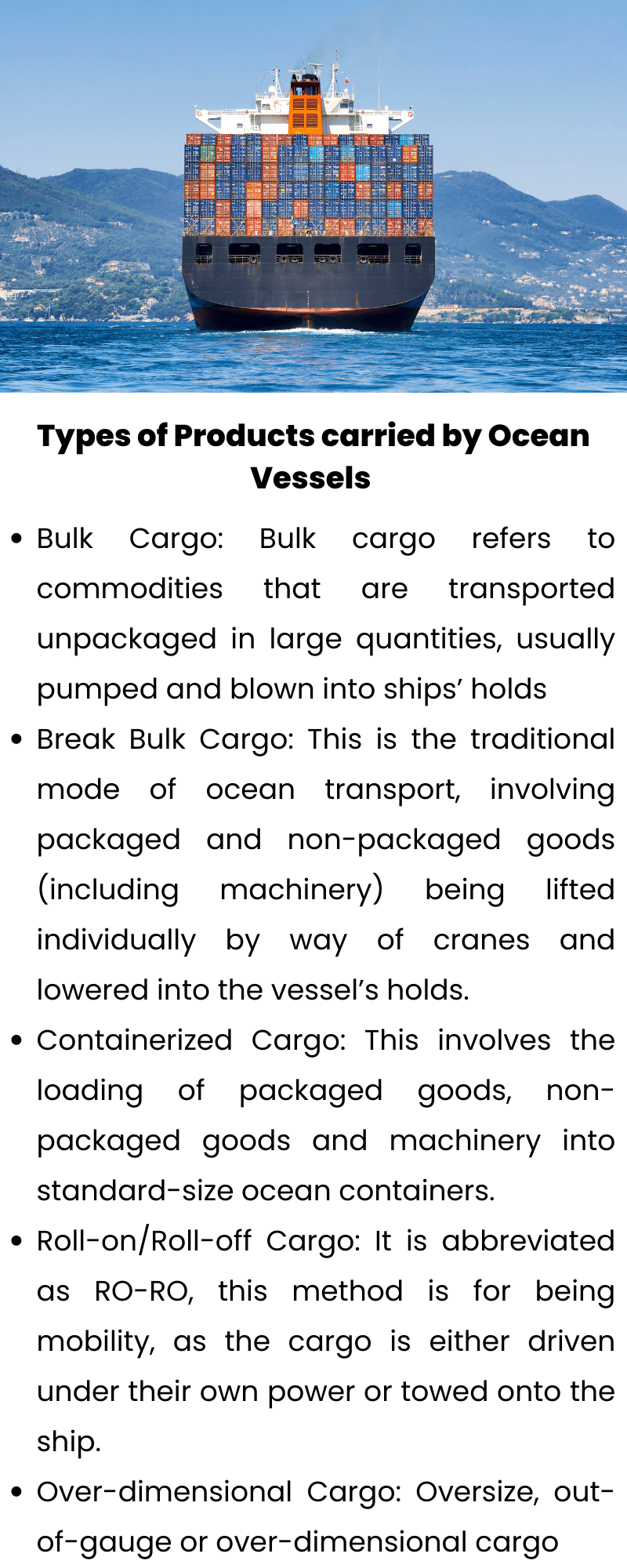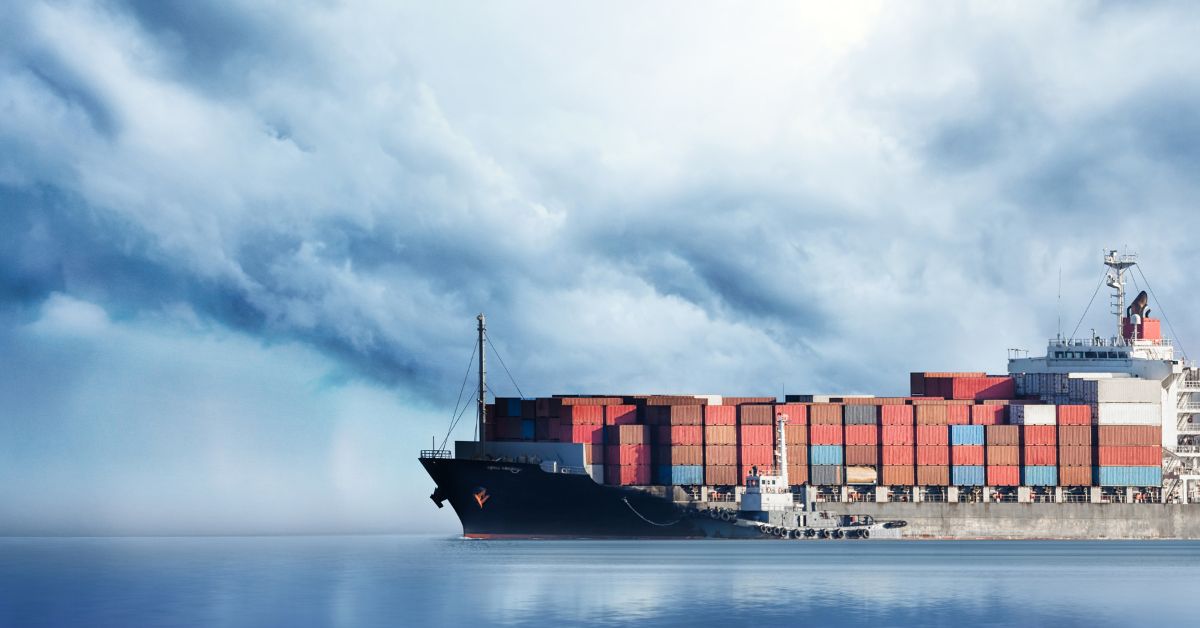Products Carried by Ocean Vessels Through Waterways has been and still is the cornerstone of the international trade.
Around 95% of the world’s commodity volume is carried in ships.
In this article we will see how the different commodities carried by ocean freight are link with the different types of vessels and handling containers that are used:
Table of Contents
Bulk Cargo
Bulk cargo refers to commodities that are transported unpackaged in large quantities, usually pumped and blown into ships’ holds. It represents the largest volume of maritime commerce.
Materials are either in liquid or granular form and this category is divided into two sub-sections:
- Dry bulk cargo: minerals (bauxite, copper, limestone, salt, etc.), cement, resin powder, fertilizer, coal, flour, sugar, grain, iron ore, scrap metal, wood pellets, etc.
- Liquid bulk cargo: petroleum products (oil, liquified natural gas, gasoline), chemicals, edible liquids (cooking oil, vegetable oil), rubber, etc.
Break Bulk Cargo
This is the traditional mode of ocean transport, involving packaged and non-packaged goods (including machinery) being lifted individually by way of cranes and lowered into the vessel’s holds.
It is also called “conventional cargo.” It includes general cargo, machinery, lumber, bundled steel, newsprint, vehicles (as long as they are lifted on and off).
The security of the cargo is dependent on adequate packaging and protection, careful loading and unloading operations and adequate securing, blocking and bracing in the ships’ hold.
Containerized Cargo
This involves the loading of packaged goods, non-packaged goods and machinery into standard-size ocean containers.
The criterion is that the cargo must fit the confines of the container frame (space-wise as well as within the container’s weight carrying limit).
It is to note that some bulk commodities are shipped in containers (certain agricultural products, chemicals, lumber, etc.)
Some large “out-of-gauge” cargo can be shipped on specialized containers (open tops or flat racks) instead of break bulk. In these cases, the packaging of the cargo is as important as if it was shipped on a break bulk service, since the container affords little or no protection and is used merely for the convenience of cargo handling.
Roll-on/Roll-off Cargo
It is abbreviated as RO-RO, this method is for being mobility, as the cargo is either driven under their own power or towed onto the ship.
Automobiles, trucks, tractors, buses and heavy machinery are shipped this way.
Out-of-gauge cargo is also often shipped on RO-RO ships. It must first be loaded and secured on a special trailer with wheels, and then the trailer is pulled on board.
Over-dimensional Cargo
Oversize, out-of-gauge or over-dimensional cargo that does not fit in a standard ocean container must be shipped break bulk, roll-on/roll-off or on a specialized container (open-top, flat-rack or platform).
Shipping oversize cargo in specialized ocean containers is expensive because the containers themselves are more expensive than regular containers and are in limited supply.
Although cargo exceeding standard container sizes can generally be accommodated on container ships, any over-width, over-height and/or over-length cargo will create “dead space” or empty space on board, and carriers will charge for that.
For example, a flat-rack container loaded with a piece exceeding the standard width on both sides will occupy the space of three containers. If the piece is both over-width and over-height, its container will occupy the space of six containers and carriers will tend to charge accordingly for the “dead space.” The same principle applies for over-length too.

